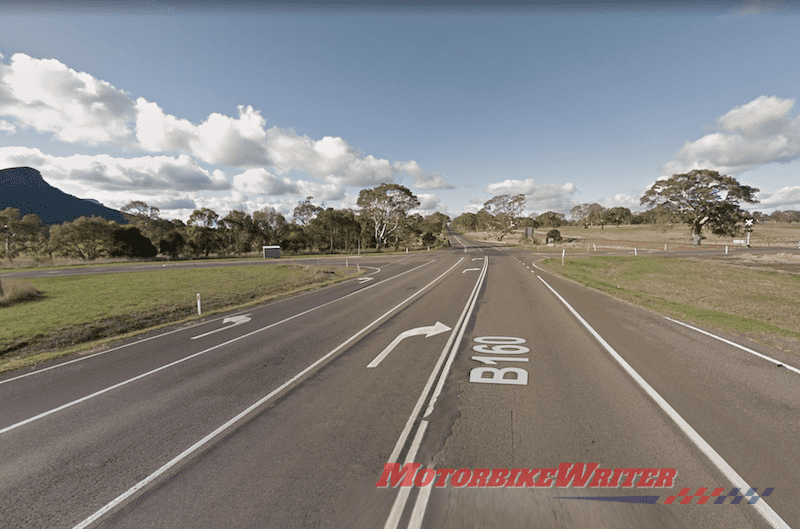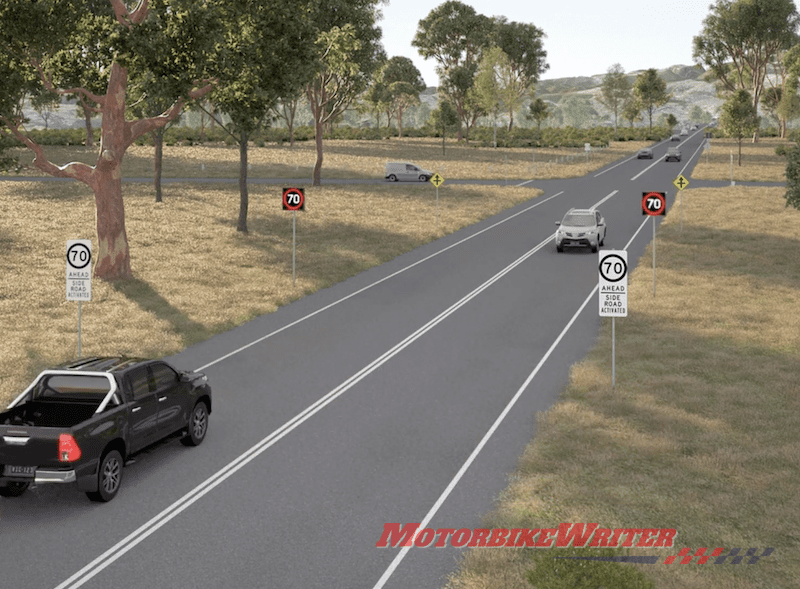A plan to temporarily lower speed limits on regional highway intersections when approaching side-road traffic is detected may not work for motorcycles.
The technology has been initially installed at the intersection of Glenelg Highway and Dunkeld-Cavendish Road and Penshurst-Dunkeld Road, near Dunkeld, Victoria, and will be rolled out across the state.
Watch this video to see how it works.
The problem for riders is that it uses the same inductor loop technology deployed at traffic lights that often fails to detect small motorcycles.
Click here to read how to improve your chances of detection by these loops.
Lower regional speeds
The new technology follows a recent call to reduce speed limits on unsealed country roads.
VicRoads says this new side-road-activated speed technology will trigger an electronic speed sign to lower the speed from 100km/h to 70km/h on the Glenelg Highway.
“There are no plans to install speed cameras through the side-road-activated reduced speed zones,” VicRoads told us.
However, we expect there may be extra policing at these intersections to enforce compliance.
The electronic speed limit sign will also be activated by vehicles waiting to turn right from Glenelg Highway on to either Dunkeld-Cavendish Road or Penshurst-Dunkeld Road.

“The reduced speed limit will stay activated until there are no more vehicles on the side roads waiting to enter or cross the main road,” VicRoads says.
VicRoads is also installing short lengths of “flexible steel guard fence” in front of the new electronic signs to reduce the risk of motorists crashing into them.
Local rider Anthony Morrison says he is concerned about the new technology.
“My concern naturally as a rider coming along a 100km/h zone and suddenly presented with a 70 speed sign with a car behind me is scary just like the 40 with flashing lights,” he says.
Click here for more on the 40km/h emergency vehicle rule.
History of crashes
VicRoads says 70% of fatal intersection crashes in regional Victoria occur on high-speed roads.
“Intersections in regional areas have a greater risk due to higher travel speeds, particularly where small side roads meet main roads,” VicRoads says.
“This intersection near Dunkeld has seen two crashes in the past five years, with one resulting in serious injuries.”
VicRoads claims the benefits of side-road-activated speeds are:
- Instructing drivers on the main road to slow down if there are other vehicles approaching from side roads;
- giving drivers on the main road more time to react if side traffic fails to give way;
- giving drivers on side roads more time to assess gaps in traffic and enter the main road safely;
- letting drivers know they’re approaching an intersection, which will prepare them for any merging traffic; and
- significantly reducing the severity of crashes due to the reduced speed limit when traffic is merging from side roads.
“A similar program in New Zealand has reduced serious and fatal crashes at intersections by 89% since 2012,” VicRoads says.


